We couldn’t be more excited about Captain America: Civil War, but we also couldn’t be less enthused with its source material. The comic event was epic, but it was also a mess, where Iron Man inexplicably became a supervillianous arsehole. Here’s a guide to Marvel’s original Civil War that shows why we’re glad to see the movie seems to only be taking its name, and little else.
The Superhero Registration Act
When 2006’s Civil War begins — first with a seven issue main series, but eventually spinning out into 13 Civil War spinoff series and numerous tie-ins in Marvel’s ongoing titles — the US government is already considering mandating superheroes to reveal their identities to them and become Federal employees, in the wake of an increase in anti-hero sentiment. Heroes including Iron Man and Spider-Man head to Washington to delay such an act being passed, but an assassination attempt on Tony only serves to highlight the importance of the act, although it’s revealed to the reader that Tony planned the assassination attempt, as he’s actually hugely-pro Registration. Thus begins Tony’s maddeningly quick descent into arseholery.
SHIELD makes the mistake of asking Steve Rogers to be the public face of the act, and to be the one that takes down any dissenters and brings them in. Naturally, Steve is horrified and refuses, leading the President of the United States himself to declare Captain America an enemy of the state — forcing him to go underground.
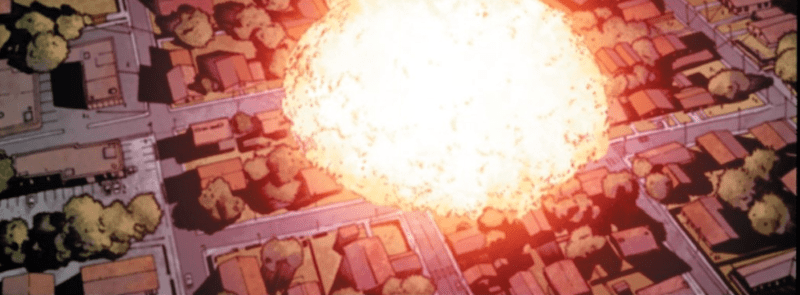
But neither of these acts ultimately ends up as the driving factor behind the act’s passing: instead, it’s the then-relatively unknown superhero team known as the New Warriors (in fact they’re still only really known for kicking off Civil War). A group of young mutants taking part in a behind-the-scenes reality show, the Warriors pick a fight with a group of supervillains in Stamford, Connecticut, to create interesting drama for their show. They get plenty of drama when one of the villains, Nitro, uses his explosive powers to level a section of the town, killing 600 civilians.
Only Nitro and one of the New Warriors, Speedball, (who, traumatised by the events, takes on the hilariously edgy mantle of Penance after learning his powers have been warped by the blast and are now activated by self-inflicted pain, and makes himself a suit with internal spikes to gouge himself) are the only survivors. Less than a week later, the Super Hero Registration Act (SHRA) is born.
Tony Stark Arseholishness Level: Kind of an arsehole
Spider-Man Unmasked
In the early days of the act, SHRA-fan Tony Stark becomes SHIELD’s face of the program, which doesn’t actually require heroes to publicly reveal their identities, but does force them to confirm their real identities with SHIELD and become salaried government agents. Even then, many disagree, until Tony plays his first major trump card: getting Peter Parker to publicly unveil that he is Spider-Man on national television. As his reward, Tony builds Peter the “Iron Spider” costume.
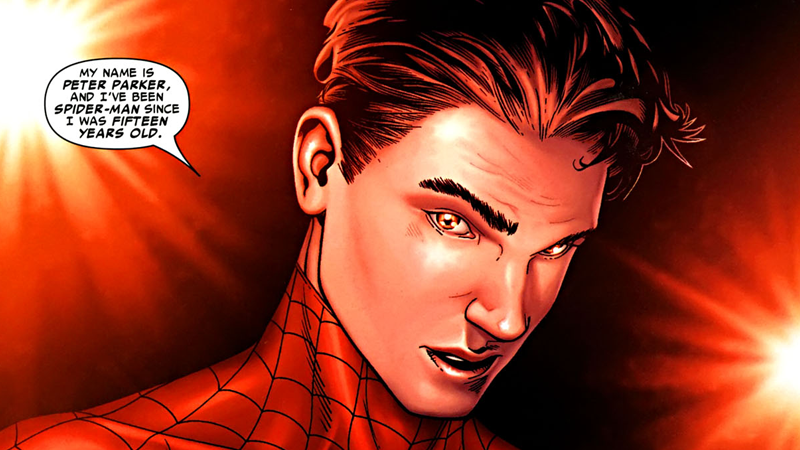
Fun fact: this immediately goes horribly badly for Peter, who is fired from the Daily Bugle, and forced to bring Aunt May and Mary Jane Watson into protective custody to avoid retaliatory attacks by Spider-Man’s litany of villains (which would eventually later culminate in Peter signing a deal with the honest to god devil Mephisto to wipe out his unmasking, thus erasing his marriage to Mary Jane, but that’s a whole other story).
Spider-Man’s public unveiling sparks the first big wave of sides being taken in the conflict — more heroes choose to register, while just as many begin to form a resistance with Captain America as its leader.
Tony Stark Arseholishness Level: An honest to god arsehole, but a popular one
Turning Tides
The earliest days of the conflict saw the two sides rarely encountering each other. Tony attempts to hunt down renegades, while Cap’s heroes practice vigilante justice from the shadows. Even as larger teams like the X-Men announce their neutrality in the war, both sides are large enough that a skirmish between the heroes was inevitable: The first major tussle between Captain America’s Secret Avengers and Iron Man’s Pro-Registration team arrives soon after, when Cap stages an ambush during a meeting between himself and Tony.
The conflict is evenly matched until, out of nowhere, Thor appears from the skies, declaring himself for Tony’s cause — a complete shock to almost every hero involved in the battle, as Thor had been MIA for several months after his battle to prevent the apocalyptic Asgardian event of Ragnarok from occurring. Even more shocking? Thor straight up murders a hero. He punches a giant hole through the chest of the size-changing hero Goliath, instantly killing him, and causing Cap’s team to fall back in defeat.
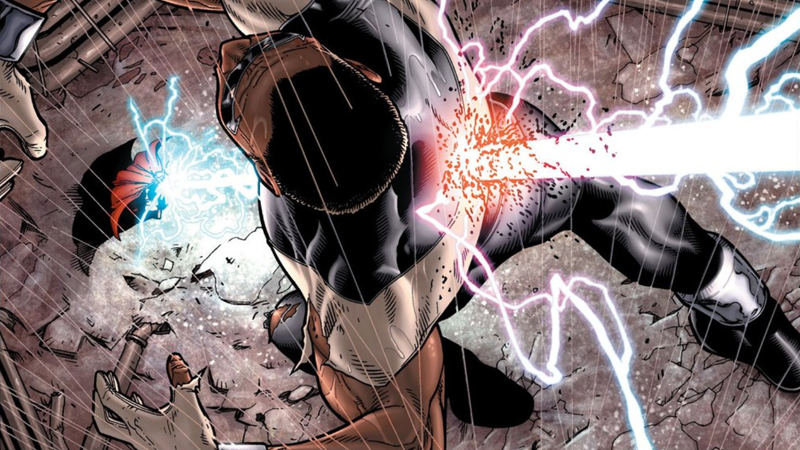
The reason Thor sides with Tony and is suddenly murderous? It’s not actually Thor, but a completely unauthorised Thor clone created by Tony and Reed Richards out of a piece of hair taken from the very first meeting of the Avengers. The violence was an “unintended” aspect of Tony’s “experiment”, because of course it was. (After Civil War, the real Thor kicks the shit out of Tony for doing this, and rightly so.)
Tony Stark Arseholishness Level: Massive arsehole
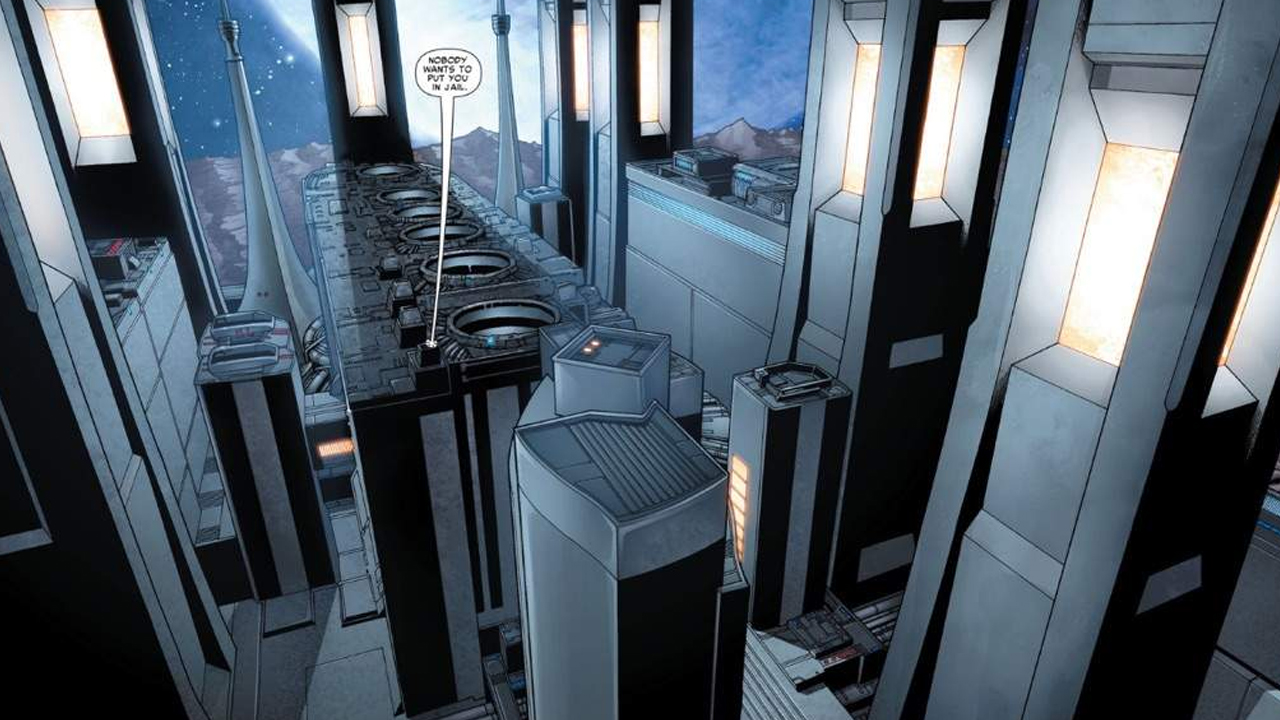
Enter the Negative Zone
Despite being a relatively lesser-known hero, Goliath’s death has a huge impact on both sides of Civil War. Big heroes like Spider-Man and Sue Storm begin questioning their faith in Tony Stark, while several heroes abandon Cap’s cause out of fear and register. The Fantastic Four is hit particularly badly, as Sue and Johnny abandon Reed for Cap’s side while the Thing leaves the country, unwilling to pick a side.
Tony doesn’t really care that he’s bleeding support, though, as he and SHIELD unveil their ultimate plan to crack down on dissent: a superhero prison built in the alternate dimension of the Negative Zone, designed by head honchos of dickery Tony and Reed. On top of that, to balance out the fact that he’s putting more and more heroes in chains, Tony and SHIELD begin recruiting actual supervillains to form the Thunderbolts, a team devoted to hunting down the renegade heroes.
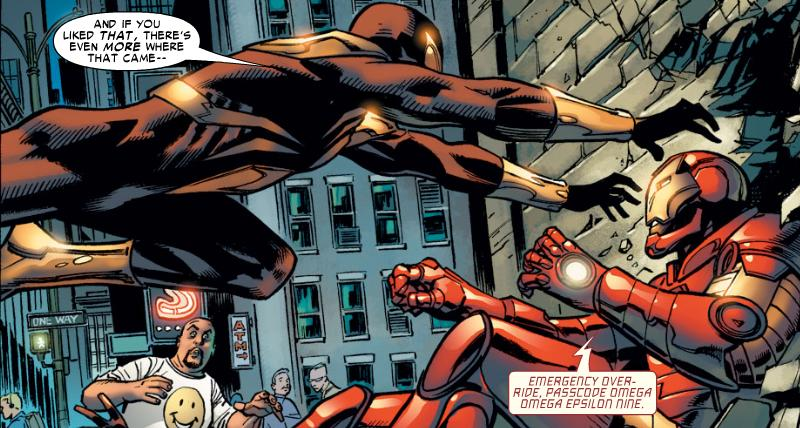
Suspecting Spider-Man’s wavering faith to his cause after Peter refuses to bring in Captain America during an ambush, Tony takes him on a tour of this horrifying prison, exposing the horrendous conditions in which Tony is keeping his former comrades. After learning that Tony has also been using bugs planted in the Iron Spider suit to listen in on his private conversations for shits and giggles, Spider-Man finally decides that enough is enough. After a brief fight between the pair, a heavily wounded Spider-Man is brought to Cap’s secret base by the Punisher who promptly joins Cap’s Secret Avengers, and then is immediately kicked out when he guns down two of Tony’s Thunderbolts who are attempting to defect to Cap’s side.
Tony Stark Arseholishness Level: Jesus Christ Tony what the hell
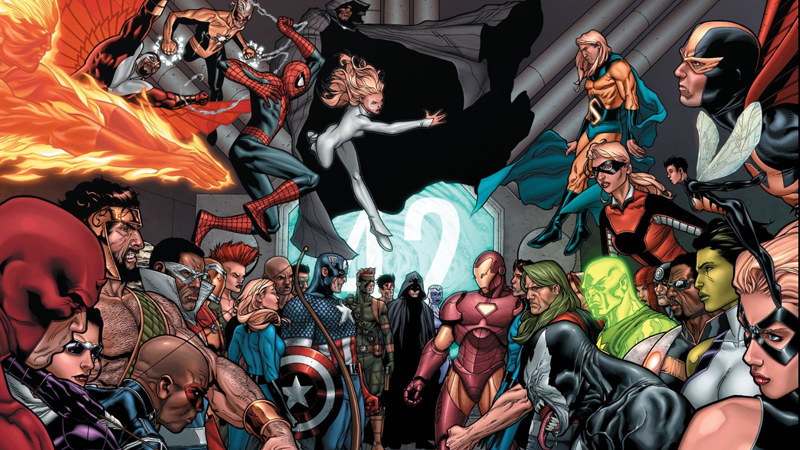
The Final Battle
With Spider-Man joining his team, Steve plans one final assault on Tony’s Negative Zone prison to liberate its detainees, knowing full well that one of his Avengers is secretly a double agent for Tony Stark, and will leak plans of the attack to him (spoilers: it’s Tigra). Steve plans his own double-cross by getting the shapeshifting young Avenger Hulkling to kidnap and replace Hank Pym, giving Cap his own double agent for the battle.
Cap and his Avengers invade the prison, and Tigra betrays them, bringing Tony and his forces to ambush them while Hulkling/Pym secretly liberates the captured anti-registration heroes. A humongous battle breaks out — and back on Earth, SHIELD’s Maria Hill decides she’s sick of superheroes in general, and starts to destroy the gateways to the Negative Zone and just trap both sides in an alternate dimension. Cloak (soon to star alongside longtime partner Dagger in their own TV show!) uses his powers of teleportation to dump the warring heroes above Manhattan, letting them rain down like human-shaped raindrops.
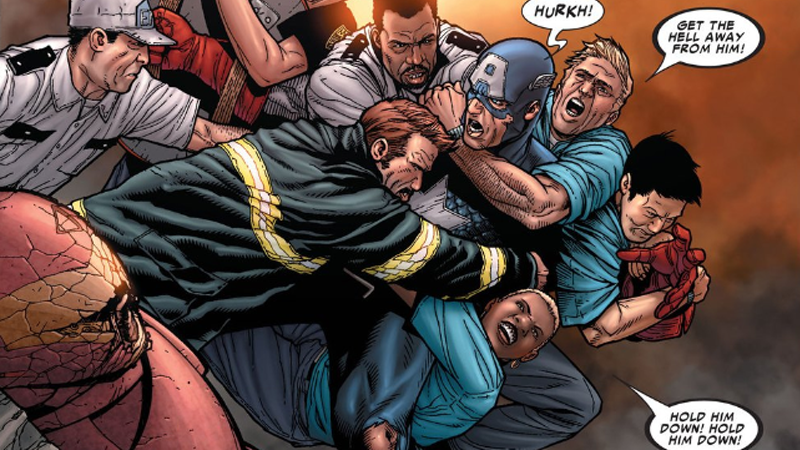
With the help of the Vision, Cap has Tony on the ropes, and just as he’s about to land the final blow and claim victory… he’s swarmed in an almost hilariously patriotic manner by members of New York’s emergency services, leading Cap to look around and realise that the battle has left Manhattan in tatters. Shocked that he’s forgotten what he was fighting for, he immediately orders the combined heroes to stand down and turns himself in while the anti-registration team scatters into the wind.
Just to make matters unnecessarily worse, weeks later Cap is gunned down by longtime foe Crossbones while in custody (and finished off by a brainwashed Sharon Carter to boot):
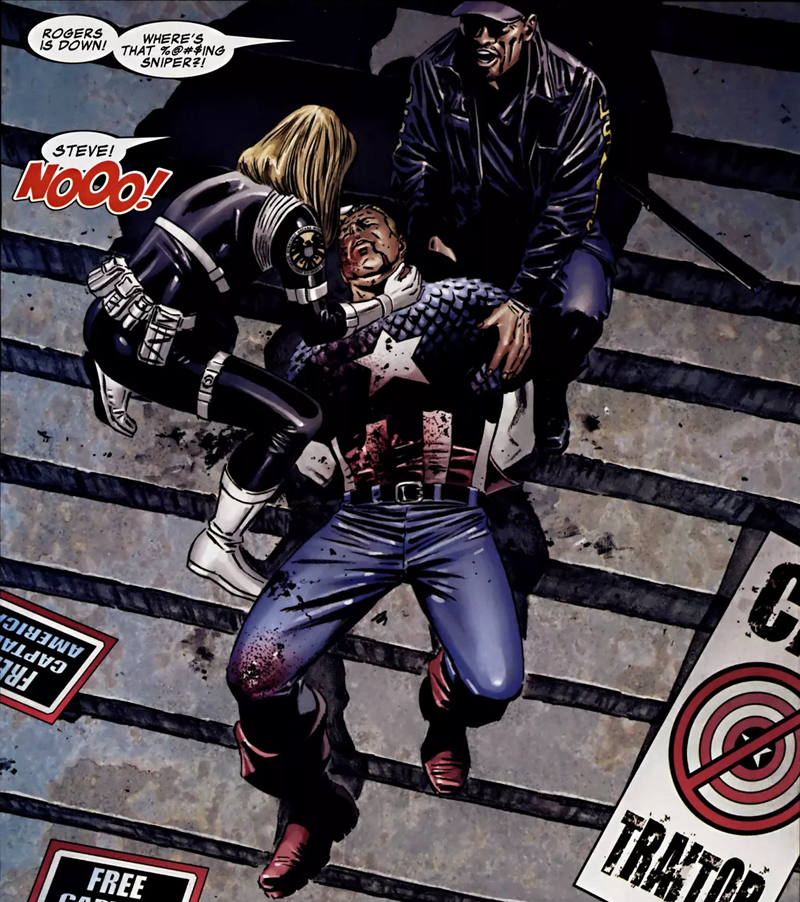
Oh dear. Don’t worry, though, it’s comics — Cap gets better because the bullets sent him through time and space.
Tony Stark Arseholishness Level: Smug arsehole
Suffice to say, Civil War was kind of a mess. Tony Stark, for all intents and purposes, essentially became a supervillain for little reason than to have the two heroes fight each other, repeatedly making horrendous, unconscionable decisions along the way. Even those on the side of Captain America were at times painted as rogues fighting for the sake of their rights to beat people up rather than protecting their right to privacy. At it’s best it’s convoluted and contrived as an excuse to watch allies punch each other in the face, at its worst it’s character-assassinating incoherence.
But even with its end, the event had a huge impact on the Marvel universe. Beyond the death of Steve Rogers, the SHRA went into full effect, mandating individual teams for every state, including a new Avengers group lead by Iron Man and Ms Marvel in New York. The Fantastic Four were split apart, leading to Storm and Black Panther taking the place of Reed and Sue Richards. And many prominent heroes go on the run as part of the Secret Avengers.
Its legacy as one of Marvel’s biggest crossover events has lingered well beyond Steve’s eventual return a few years later, to the point that we’re getting a spiritual sequel in the comics soon, this time featuring Tony Stark facing off against Captain Marvel over whether heroes should be allowed to stop criminals before they commit crimes. Hopefully Tony won’t be quite as much as arsehole in this one.
Originally posted on Gizmodo.
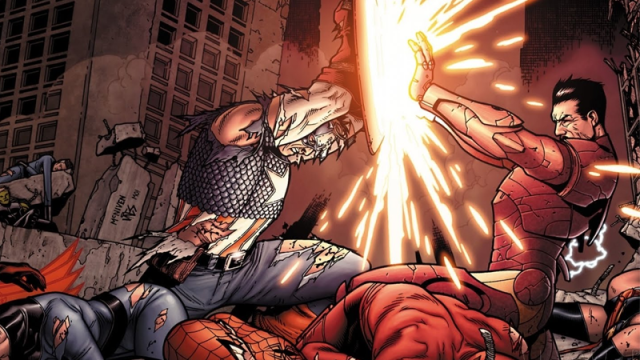
Comments
14 responses to “A Guide To Marvel’s Original Civil War Saga, Which Was Not Good”
So we’re now calling it a mess a decade later after espousing it as a brilliant storyline for almost ten years (while recognising it has some deep flaws)? Interesting.
I’d never actually read them, and a lot of the buzz I’d heard so far was that it was decent. But this still sounds like a more reasonable critique of the story arc.
It definitely seems to suffer from typical comic book hyperbole from reading this.
If you include all the tie-ins, it was always a mess; because they didn’t bother deciding key details, so things kept changing back and forward depending on the writer.
That, and all the various character derailments they had to force just to have an excuse for the heroes to turn on each other.
What tard called it a brilliant storyline? Give me their names. It was shit then and it’s shit now.
I think a lot of Civil War’s good reputation comes from having been the last Big Event when the first Iron Man came out. If you saw that and were like “holy crap, I have to know more about Iron Man”, Civil War was right there on bookshelves across the world. As someone’s first comic, it’s not a bad one – you get introduced to a ton of Marvel characters, Spider-Man unmasks, which feels significant, there’s some nice action scenes, and McNiven’s art is great. It’s very similar to Hush, for Batman.
It’s just that the actual story isn’t very good, the ending’s kind of weak, lots of the tie-ins aren’t the best, and even though they kept saying that both sides were in the right you’re very clearly meant to side with Captain America. It’s far from the worst Marvel crossover event, but it’s never been a brilliant comic.
Now that’s a top reply 🙂
It’s very good. But. so. slow. So many of the earlier issues dedicated the first 15 pages to spiderman’s unmasking.
Now take all of what is in this article and throw it into the trash… The movie uses next to none of it
As a pretty hardcore Marvel fanboy I do agreed 100% that Civil War(the comic) was a bit on the less than average side. Was a mess that relied too much on spectacle instead of just telling a good story. I think the reason it is so fondly remembered is that the aforementioned spectacle was entertaining and that the whole thing ended up leading too Dark Reign which was so good.
Still excited to see the movie though #iwannasayteamcapcauseitshismoviebutithinkpickingasidewithoutbeingfullyawareofthecircumstancesandideasboughtbyallsidesisdangerousandultimitlydetramentaltooursociety
I liked Civil War, only problems I had with it were that 1) the wrong side won and 2) the ending was rubbish (Cap gets swarmed by emergency services people? Seriously?). Apparently when it was first pitched the ending was going to be that the Hulk came back, angry that Iron Man’s Illuminati had exiled him to space, causing Cap and Iron Man to join forces to stop him. That got spun off into it’s own event though (World War Hulk).
History should not look kindly on the pro-reg side. Hilariously evil things that happened as a result of the SHRA:
-the Initiative is formed, conscripting all newly super-powered people into the military. The people running the Initiative include a Skrull disguised as Hank Pym, an honest to goodness Nazi mad scientist/supervillain, and eventually Norman Osborn. They’re so incompetent they get a recruit killed in a live fire exercise on the very first day. Don’t even get me started on what they did to Cloud Nine.
-Iron Man blows up Atlantis, for some reason.
-Norman Osborn, convicted cop killer, is put in charge of a government backed and mandated supervillain team, the Thunderbolts.
-The Kingpin tries to have Aunt May assassinated. He’s only unsuccessful because a demon decides to help out Spider Man.
-As has previously been mentioned, Captain America is shot and (seemingly) killed.
-Luke Cage finds it impossible to buy diapers for his newborn daughter without being shot at by police.
Eventually they got rid of the SHRA when Cap took over Norman Osborn’s job. Good riddance.
I’m pretty sure Kingpin was trying to have Peter Parker assassinated, even tried to account for his spider-sense, but it still wasn’t enough and Pete still dodged it, but Aunt May just happened to still be in the firing line.
I love the original Civil War story line, and while the ending was a bit odd it’s still an amazing story.
Civil war is hands down my favourite Marvel event.
It brought up the issue of accountability for all the actions and lives lost due to careless supers.
Maybe it was hard to see Tony in such a light if he’s always been your favourite character, but you can’t deny that he’s always put his ego and his own moral compass in front of others. He and Reed were plotting out the whole thing from the shadows, once he had decided that it was the right course of action. At no stage was he ever open to negotiation.
What about the awesome Wolverine and Punisher spin offs.
Which see’s Wolverine hunting down the parties responsible for Stamford and uncovering the the whole mystery.
Finally showing the Punisher pitted against the super villains of the Marvel universe, after deciding that they had been left unaccountable for too long.
Maybe it wasn’t perfect, but it still had so much going for him.
I liked Civil War more as a part of the larger story running through all those events at the time which ended with Siege I think? I think Civil had a lot of great moments though.